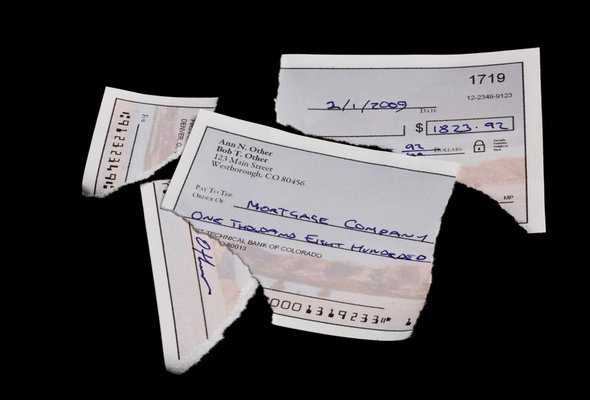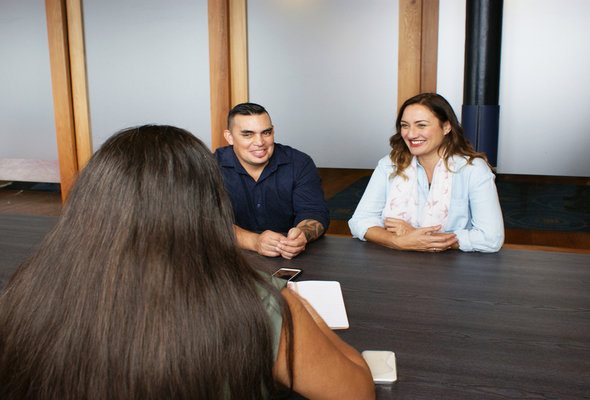If you’re tired of handing over money to your bank for overdraft fees each month, you might want to think about opening a checkless checking account. Banks like Bank of America and Citi offer check-free banking options that come with built-in overdraft protection along with the same features that you’d get with a regular checking account. Here’s the basics of checkless checking, including the biggest pros and cons.
If you’re looking for financial advice beyond checking, a financial advisor can help you create a plan that fits your needs and goals.
How Do These Accounts Work?
In terms of how you can use it, a checkless checking account works the same way as any other checking accounts with one exception – you can’t write checks. Both the SafeBalance account from Bank of America and Access Account from Citi come with a debit card for making purchases and you have the ability to pay bills, transfer funds or check your balances through online and mobile banking.
It’s also virtually impossible to overdraft with a checkless checking account since transactions that would put your balance in the negative are automatically declined. The only time you’d have to worry about going over would be if a transaction was authorized for one amount but the actual charge was more. For instance, Bank of America notes that if you go out to eat and pay with your debit card, the tip may not be added in right away and you could end up with a negative balance. If something like this happens, however, you won’t be charged a fee.
Are There Other Fees I’ll Have to Pay?

Even though you won’t have to worry about overdraft fees with a checkless checking account, there might be monthly maintenance fees associated with these kinds of accounts. With the SafeBalance account, the fee is $4.95 a month and there’s no way to get it around it. Citi customers with a checkless checking account are charged a monthly service fee of $5, but you can avoid it by making one qualifying direct deposit a month, one qualifying bill payment per month or maintaining a $1,500 average monthly balance.
5 Fees to Watch Out for When Switching Banks
Who Benefits Most From a Checkless Checking Account?
A checkless checking account is a practical option for people who want to avoid overdraft fees and don’t rely on writing checks. These accounts are designed to decline transactions that would result in a negative balance, which helps prevent costly overdraft charges. Individuals who primarily use debit cards, mobile apps, or online bill pay may find this type of account more convenient and predictable for everyday spending.
This account type is also a good fit for students, first-time bank users, or those who have had trouble managing traditional accounts in the past. Because checkless checking limits the risk of overspending, it can be a useful tool for learning how to manage money more responsibly. It also appeals to people who want a simple account structure without extra features they may not use.
However, checkless accounts are less suited for people who need to write paper checks or regularly use services like money orders. Since many checkless accounts don’t include check-writing privileges, users may have to pay additional fees for these services elsewhere. For those who occasionally need checks or want full account flexibility, a traditional checking account with careful balance monitoring might be the better choice.
Should You Open a Checkless Checking Account?
If you need a straightforward, simple way to manage your money, a checkless checking account can allow you to do that with minimal fees. That doesn’t mean, however, that it’s the right option for everyone. If you occasionally need to write a personal check or make a bill payment using a money order, your bank might not allow you to order one through the checkless account or you might have to pay a separate fee for these services. For example, a money order will cost you $5 at Citi.
Customers who’d like to have access to checks without having to pay extra may be better off going with a traditional checking account instead and opting out of overdraft protection altogether. That way, you still have the convenience of writing checks when you need to and you can monitor your account on your own to avoid ending up in the red.
Bottom Line

When comparing checking accounts, it’s important to factor in all of the costs, like the possibility that a checkless checking account could be cheaper than a regular one. Once you’ve thought about everything, decide which option makes the most sense for your banking needs.
Tips for Financial Planning
- A financial advisor can help you create a financial plan for your needs and goals. Finding a financial advisor doesn’t have to be hard. SmartAsset’s free tool matches you with up to three vetted financial advisors who serve your area, and you can interview your advisor matches at no cost to decide which one is right for you. If you’re ready to find an advisor who can help you achieve your financial goals, get started now.
- Owning a checking account is a step in the right direction when it comes to managing your money. It allows you to keep better track of your spending, making for a better budgeting system than just keeping cash in a jar.
- Part of your budget should include some sort of savings, especially retirement savings. It’s never too early to start saving for retirement. Plus, once you have a checking account, opening an accompanying savings account is just as easy.
Photo credit: ©iStock.com/YinYang, ©iStock.com/Graham Stewart, ©iStock.com/corners74
